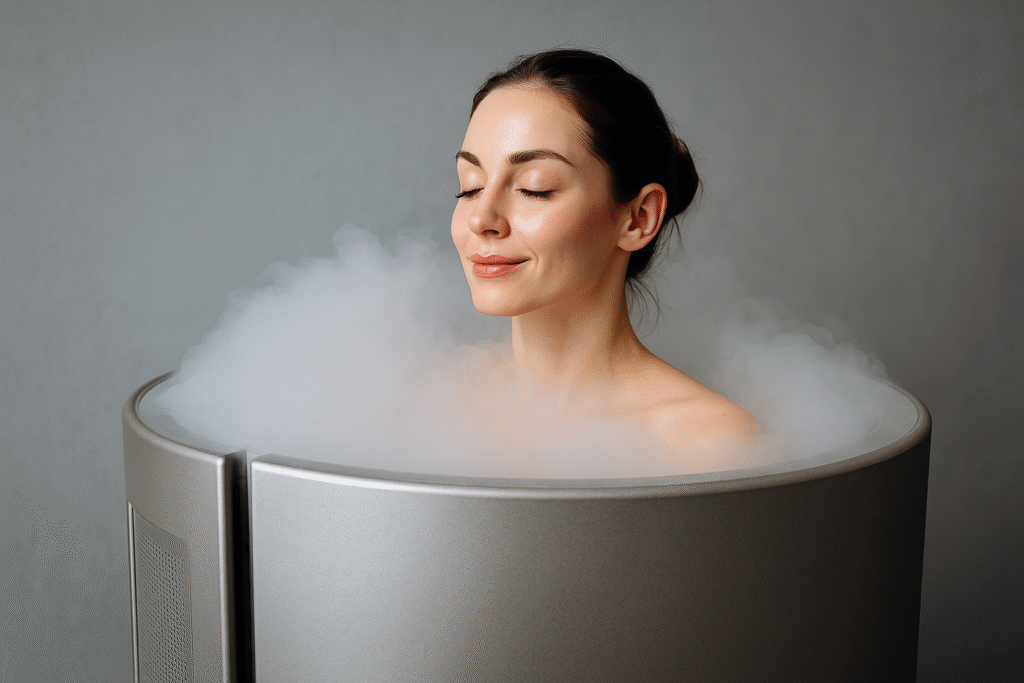Ice age for your body - how cold contributes to healing
Whether ice baths, cold chambers or cryotherapy Cold therapy is in vogue. Athletes swear by it for regeneration, biohackers swear by it to improve performance and it has been used specifically in medicine for decades. But how exactly does cold actually affect the body? And what should you look out for?
In this article you will learn everything about the Cold therapy effecttheir possible applications and potential risks.
What is cold therapy?
Cold therapy (also known as cryotherapy) refers to the targeted use of cold for medical or therapeutic treatment. It can be applied locally (e.g. with ice packs) or to the whole body (e.g. in a cold chamber).
Cold therapy effect: how your body reacts to cold
🔹 Vascular constriction & blood circulation
When it is cold, the blood vessels contract - the body wants to retain heat inside. The application is followed by Reactive increased blood flowwhat the Stimulates metabolism and the Regeneration promotes.
🔹 Pain relief
Cold inhibits pain receptors, slows down nerve conduction and has an anti-inflammatory effect - ideal for acute injuries, rheumatism or joint pain.
🔹 Inhibition of inflammation
Cold stimuli reduce the release of inflammation-promoting cytokines - which also makes the therapy popular for chronic inflammation.
🔹 Muscle regeneration
Many athletes use ice baths or cold chambers after training to repair micro-injuries more quickly, soothe sore muscles and maintain performance.
🔹 Mental clarity & stress reduction
Cold activates the sympathetic nervous system - the body releases noradrenaline and endorphins. This ensures mental focus, a good mood and a strengthened immune system.
Forms of application of cold therapy
1. Cold chamber (whole-body cryotherapy)
- Temperatures: -85 °C to -120 °C
- Duration: 2-4 minutes
- Application: Sports medicine, immune system, psyche
- Advantage: Full-body stimulation in a short time
2. Ice bath (cold baths)
- Water temperature: 5-12 °C
- Duration: 3-10 minutes
- Application: sport, mindset training
- Advantage: Inexpensive & effective, even at home
3. Local therapy (e.g. ice pack, cryo-stick)
- Duration: 10-20 minutes
- Application: bruises, swelling, joints
- Advantage: Targeted application
Risks & contraindications
Despite the many advantages, there are also risks:
| Risk / side effect | Explanation |
|---|---|
| Frostbite | If exposed to cold for too long / directly |
| Circulatory problems | especially with low blood pressure |
| Asthma attacks | due to cold, dry air |
| Not recommended for | Heart disease, Raynaud's syndrome, open wounds |
For whom is cold therapy useful?
- Athletes (regeneration, performance)
- People with chronic inflammation (e.g. rheumatism, arthritis)
- People with high stress levels
- Biohacking enthusiasts
- People with sleep problems
Conclusion: Cold therapy - a real boost for body & mind?
The Effect of cold therapy is scientifically well researched and versatile. It supports regeneration, relieves pain, promotes mental strength - and brings your body into balance in a natural way. If you use it consciously and correctly, you can achieve a lot with cold.
